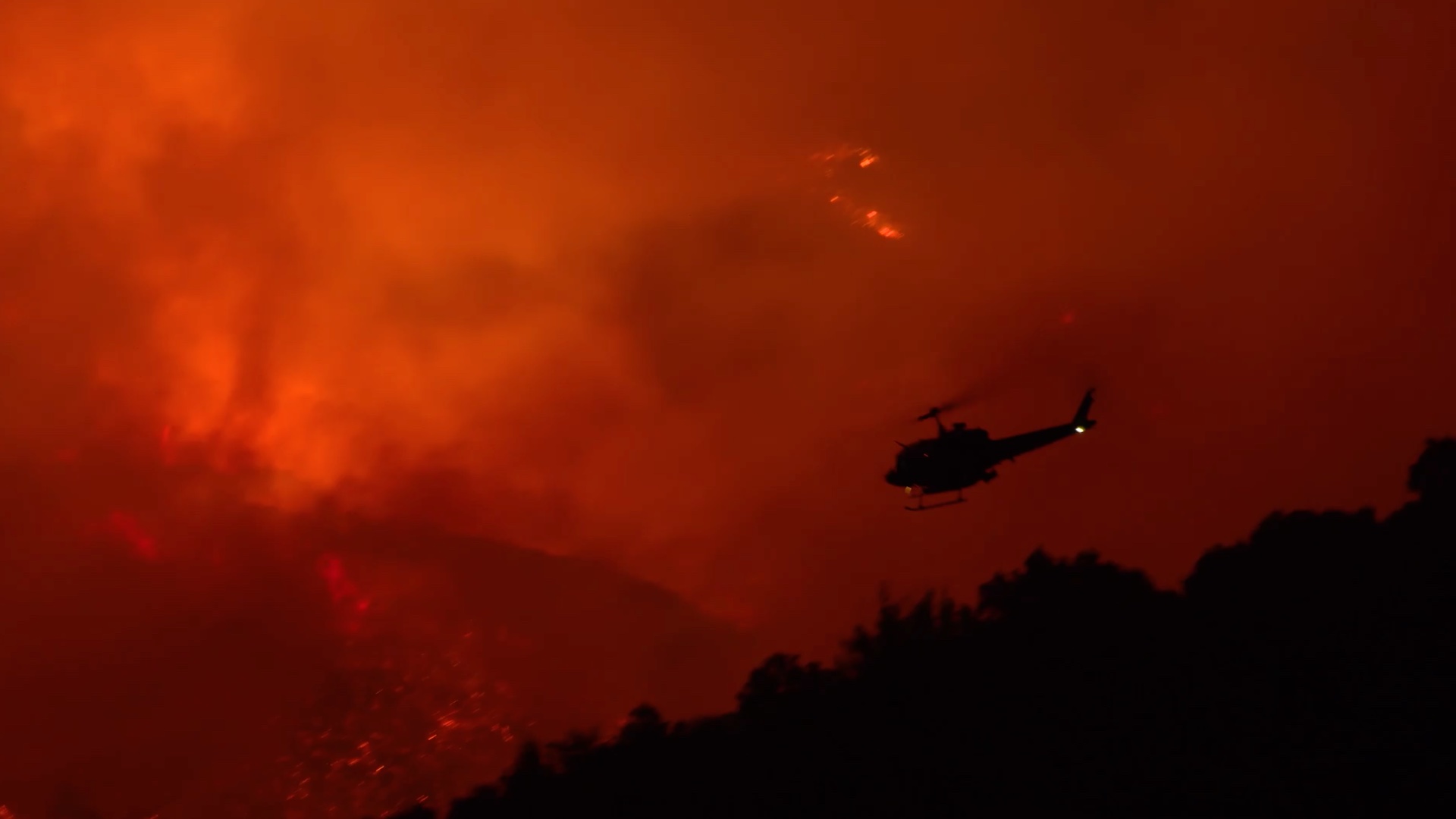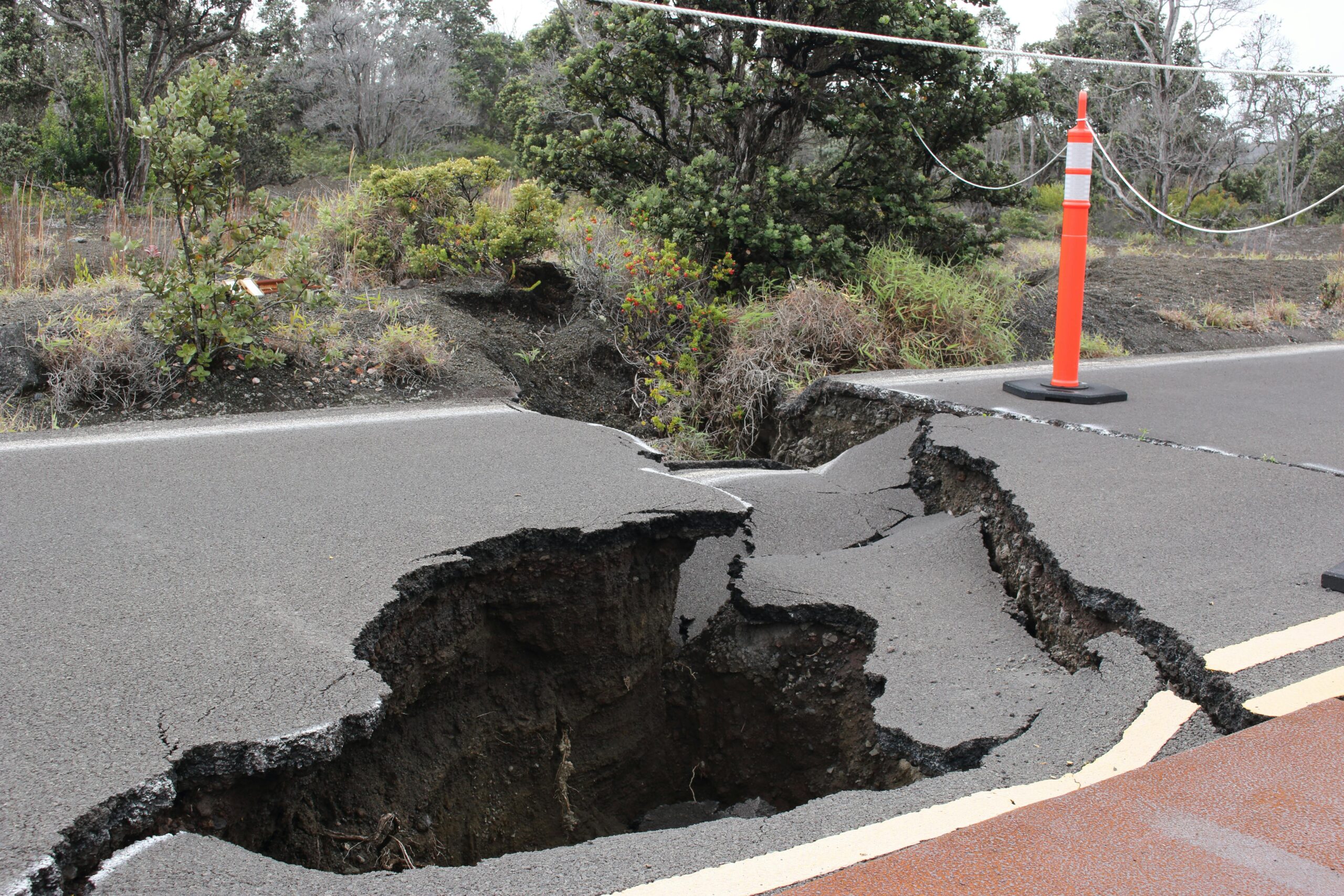Below are summaries from the National Significant Wildland Fire Potential Outlook, provided by the National Interagency Fire Center, for the period of August 2021 through November 2021. The full outlook can be located here.
Year-to-Date Statistics:
| Year-to-date statistics | Number of Fires | Acreage Burned |
| 2021 (01/01/21 – 07/03/21) | 38,207 | 1,868,204 |
| 2020 (01/01/20 – 07/03/20) | 32,563 | 2,190,681 |
| Percentage of 10-year Average | 107% | 46% |
Source: https://www.nifc.gov/fireInfo/nfn.htm
Observations in July:
Fire activity increased significantly this past month. As a result of this, the National Preparedness Level increased to five, the third earliest occurrence since 1990. While fires moderated through Colorado, Utah, and the Southwest, they picked up notably in the Pacific Northwest, Idaho, Montana, and California. The drought expanded tremendously in these areas, as 95% of the West is in drought.
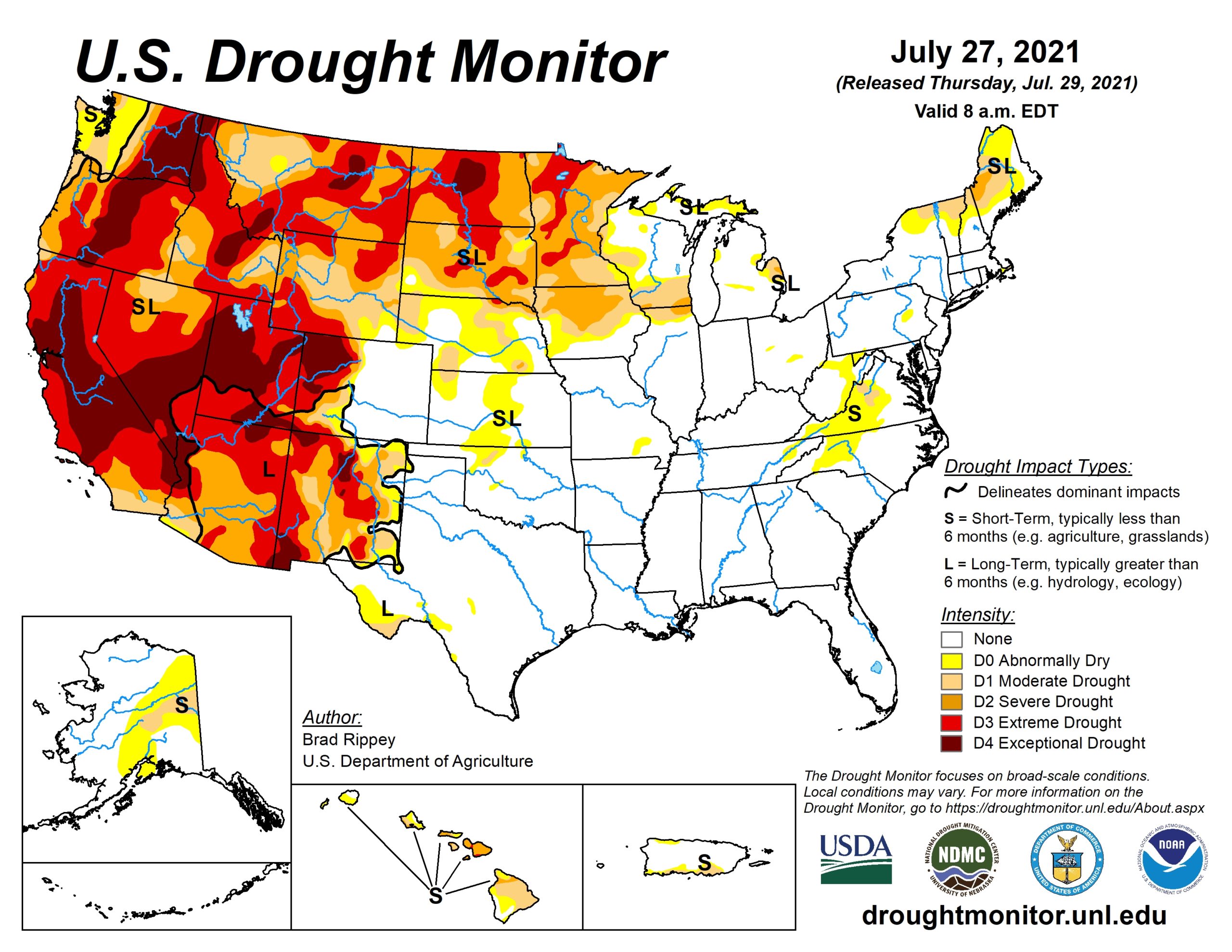
Wildland Fire Outlook for August-November:
Climate outlooks indicate warmer than normal conditions are likely for much of the country, especially the West, heading into fall. Drier than normal conditions are likely for the interior Northern West in August, expanding to include most of the West during fall. Near normal precipitation is likely with the monsoon in August, which should continue to alleviate drought briefly. However, drought is likely to expand and intensify across much of the West beginning in September.
The Southeast is forecast to have above normal fire potential in October and November. Normal significant fire potential is forecast for Alaska along with most of Eastern Area. Above normal significant fire potential is forecast to continue through September for much of the Northwest, Northern Rockies, and northern portions of the Great Basin and Rocky Mountains. Most of these areas will return to normal fire potential in October and November.
Most mountains and foothills in California are forecast to have above normal potential through September. Areas prone to offshore winds will likely keep above normal potential into October and November, specifically in southern California. Finally, Hawaii will likely have above normal significant fire potential into October.
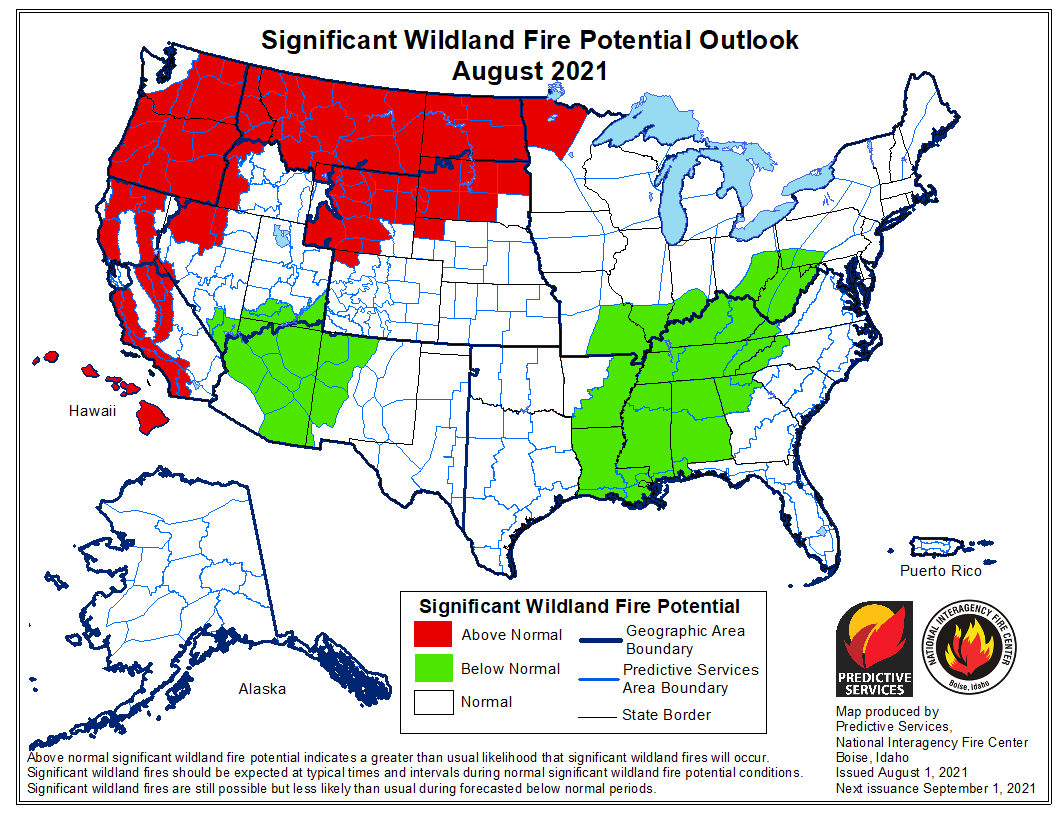
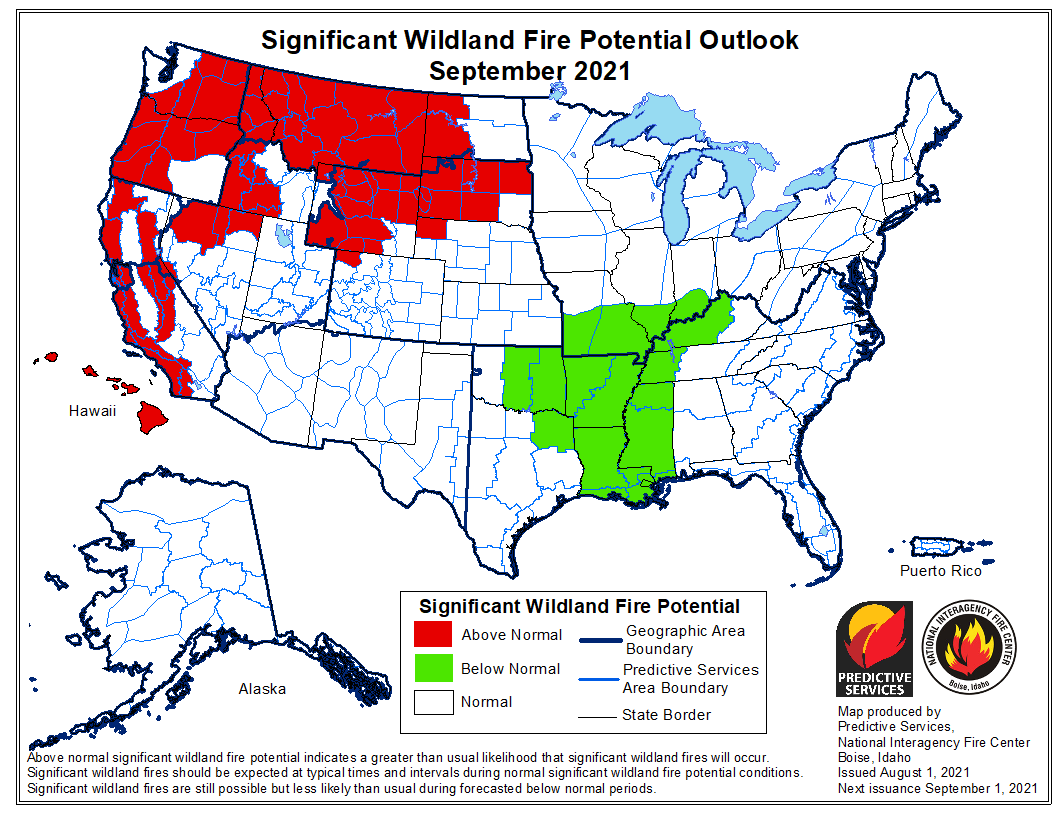
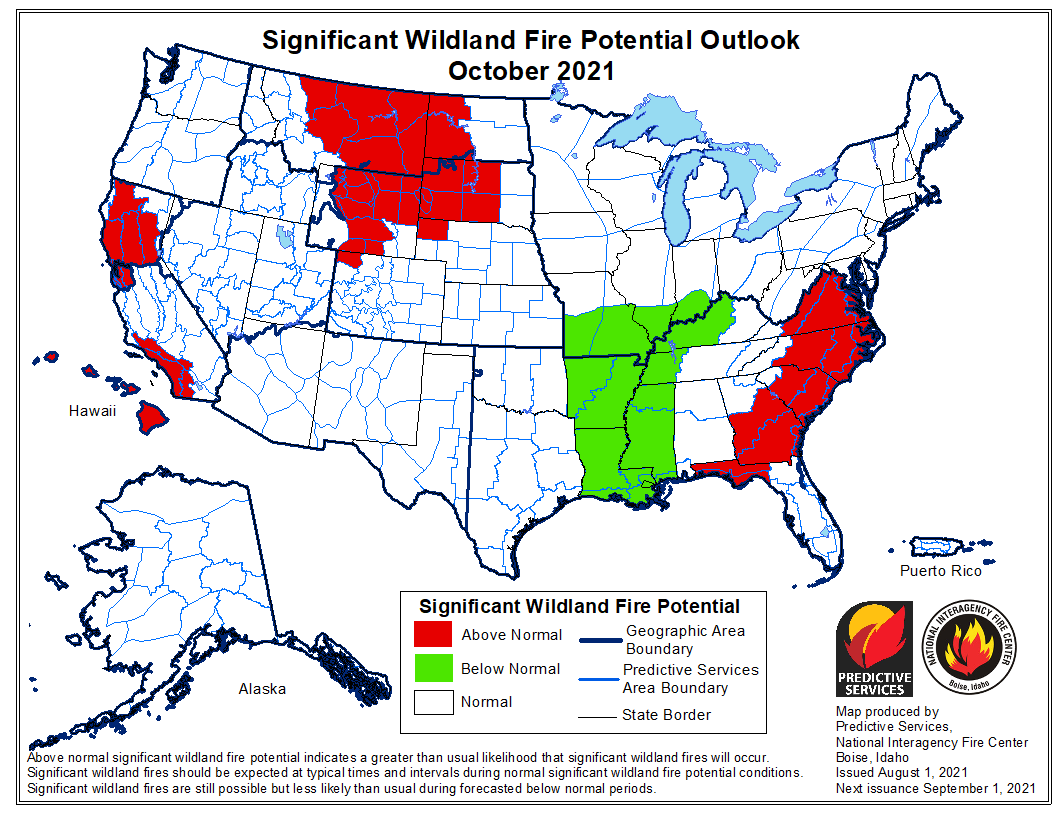
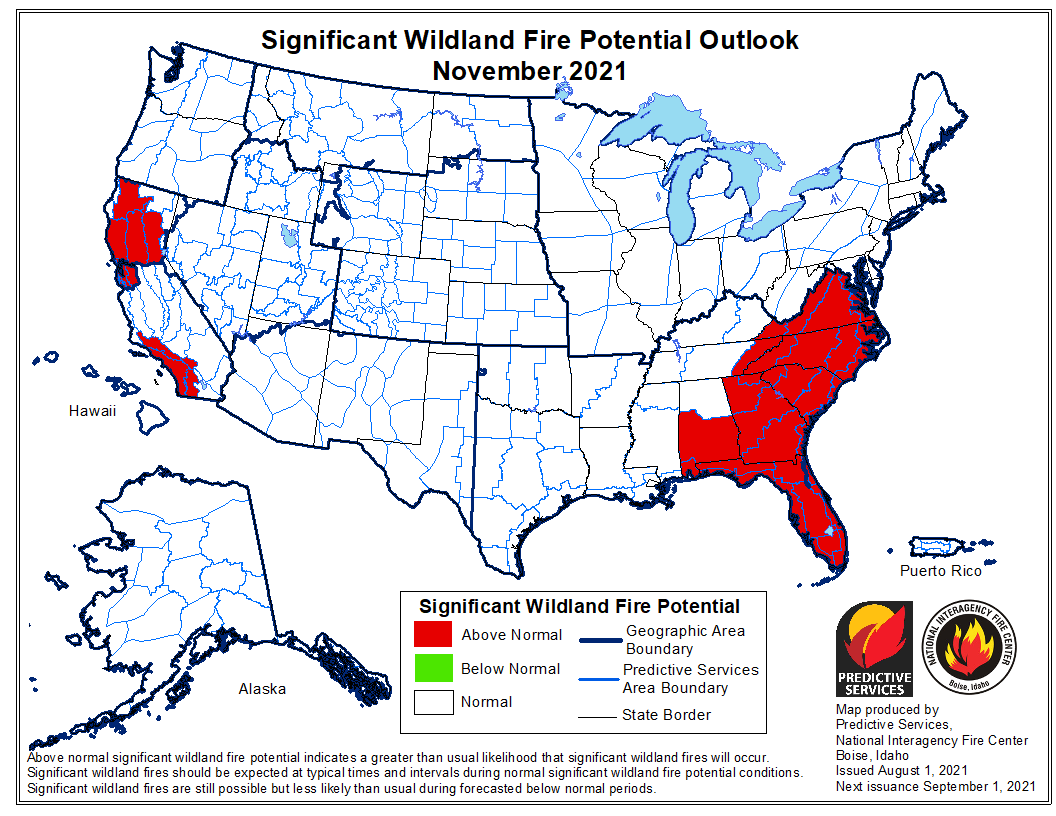
Source: NIFC

